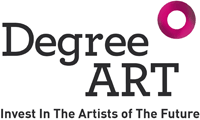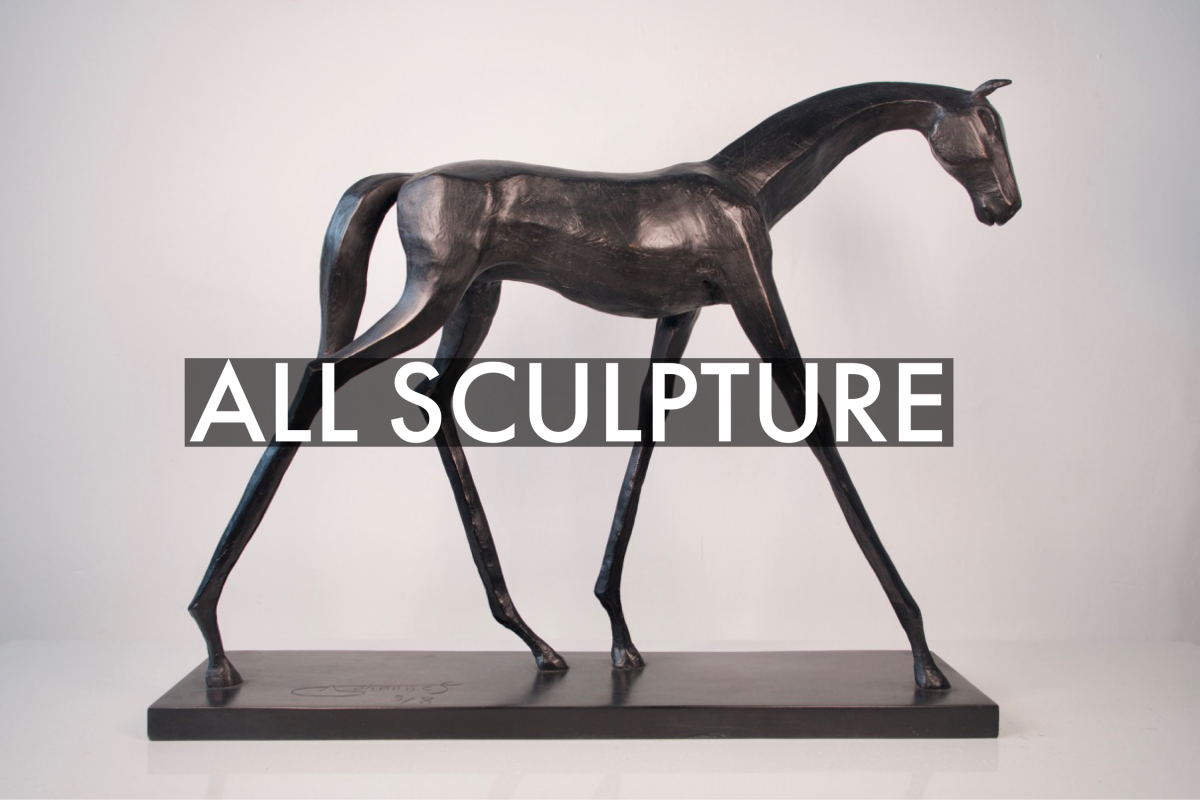
In preparation for our upcoming exhibition, "Convergence: Swim, Walk, Explore" DegreeArt.com catches up with featured artists' Lucy Devenish and Luke M. Walker to ask them about their unique artistic processes, styles and details of exclusive work being featured in our exciting new exhibition.
1) What first inspired you to train as an artist?
Lucy: My first degree in English Literature introduced me to the work of William Blake (1757 – 1827), that eccentric, obscure, difficult writer and artist. Considering the relationship between his poetry and prints allowed me to contextualize my own ongoing art practice within my study of writing. I decided to retrain by undertaking a Foundation Diploma and then a Masters Degree at City & Guilds of London Art School: my first encounter with toxic etching in the print room made plain to me my fascination with this process.
Luke: I'd been painting since my early twenties, inspired particularly by the great Landscape painters; Turner, Monet, Van Gogh. However it was after seeing a Frank Auerbach show at the Courtauld depicting construction sites of London in the 50's and 60's that I felt I needed to challenge my practice, so applied to undertake an MA in Fine Art at City & Guilds of London Art School.
2) Luke, what aspect of urban landscapes inspires your work?
Luke: I am intrigued by the transitional nature of the city. I am attempting to articulate the fluid and continual states of change, buildings seem immensely solid and permanent entities but the economic nature of the city means very little actually remains static. Our collective memories soon forget how quickly things change; the riverbank at Nine Elms is undergoing a complete transformation and will be hardly recognisable as the same place it was just three or four years ago.
With this in mind I am particularly concerned at what we might be losing in these periods of flux, for example the Brutalist Architecture of the Sixties and Seventies is under threat at the moment. Viewed as monstrosities by many, some were extraordinarily designed and detailed; far more so than many of the curtain wall steel and glass structures that are replacing them with all the additional resources and upheaval this brings. I am questioning whether we are in danger of losing integral buildings for short term gain, without considering how they could be reused.
3) Lucy, what is it about your explorations of reomote landcsapes that inspire your work?
Lucy: Experiencing these places, at the edge of the land where earth meets sea and sky, inspires the making of the work. I desire to be bodily and sensorily immersed as fully as possible within the landscape during expeditions to various coastlines in Britain. Crucially, as the sea’s water is opened with my outstretched hands it closes almost immediately, allowing the freedom to journey without leaving lasting physical tracks. A recognition of this dispersal of the wake (track) in the water is the driving force for recent artworks, in recollecting and mapping these swims. I view my swims as creative acts in themselves and the work made subsequently allows the viewer to engage with the journey – and in my experience.
4) Can you describe your process of work? From walk/swim to studio?
Lucy: Each work starts with a journey to a specific part of the British Isles. Preparation and planning are key: I determine where best will serve my particular curiosity at that point in time. The expeditions are coastal, so weather and tide are taken into account. Scrutinising OS maps is important at this point in identifying points of interest (ruins, megaliths and interesting coastal terrain before departure). My background in literary criticism underpins the use of writing as a conduit for my experience in making a journey: I write about the experience and collect text in transit. This can be taken to mean words relating to specific locations, found during a journey; place names (the development and change of which in itself can be interesting and illuminating); gathered words associated with a specific area and other words found in an area.
When swimming, I wear a full-length wetsuit with a camera on my head. Each long swim is an artistic act of endurance in itself whilst my activity in the studio deals with the mapping and memory of these immersive encounters with the coastline.
The swims are recorded digitally using a camera – although a sensory immersion is only experienced in that moment. Back in the studio, steel plates (a material long associated with ship building and marine activity) are corroded in nitric acid through their own lengthy immersions to create aerial views of the coastlines swum, on to which explorations through recollection are mapped. These plates are then inked up and printed through a Rochat press.
Luke: The work usually begins with a walk. The walk usually begins with an idea; this might be a particular intent, to walk the length of Crossrail under London, or to connect two related landmarks like Trellick and Balfron Towers or it might be a more general ambition to explore an area or hunt for building sites or typologies. This inevitably leads to a chance discovery of a particular place or building and I usually return to the studio for a more in depth study. The work then evolves from site sketches, research and photographs to a particular aspect of the place and what sets it apart. I am looking for its unique architectural language from which I then develop a range of processes that I can begin to explore in paint.
I am trying to strike a balance between control and chance, allowing the paint to express something of its own character in their rendering. I am keen that each work, both the walks and the paintings, contain some element of risk in their making.
5) What has been the most exciting and challenging aspects of taking part in a joint exhibition such as Convergence?
Lucy: I’m delighted to be working with Luke M. Walker on this exhibition. Finding intersection points between our practices has been fascinating as have our ongoing discussions about the relevancy of making work about landscape in the 21st Century. Our walks and swims through London were planned by writing postcards to each other: we are both interested in mapping and archiving and how to express these concerns in an artistic sense. We encountered a couple of technical challenges when developing the technique for translating our rubbings from the walks into etchings but working together how to overcome these practical problems proved possible. My work generally deals with the coastline so making journeys in the City threw up a different set of challenges, enquiries and experiences.
Luke: Swimming in Hampstead Men's Pond in 9 degrees in December was pretty challenging! It was wonderful to get the opportunity to work with Lucy Devenish in making our joint work for the show; 'The Path of Least Resistance'. The conversation that developed between us during the course of the planning and implementation of the walks, and then the prints was hugely exciting. We began each walk without a clear idea of what we might encounter and it was only as we begun to see a pattern emerging and the signs in the landscape that we began to join the dots. The process of print-making also involved a great deal of experiment and trial and error to find the best way to take our rubbings and make something of them in the studio. Working towards the show has energised my practice and pushed me out of my comfort zone to create works that have surprised me in their making.











